You’re about to discover how strategic plant placement can transform your living room from a basic space into a breathable sanctuary. By implementing these nine professional design techniques, you’ll create an environment that balances aesthetics with functionality. From vertical gardens that maximize wall space to expertly layered lighting that highlights your botanical displays, these proven methods will help you achieve magazine-worthy results without hiring an interior designer. Let’s explore how to bring your vision to life.
Contents
- 1 Create a Living Wall With Vertical Planters
- 2 Mix Plant Heights for Dynamic Visual Interest
- 3 Style Built-In Shelves With Cascading Greenery
- 4 Transform Window Spaces Into Mini Conservatories
- 5 Design Plant-Friendly Room Dividers
- 6 Incorporate Plants Into Coffee Table Arrangements
- 7 Utilize Macramé Hangers for Aerial Display
- 8 Position Statement Plants in Unused Corners
- 9 Layer Plants With Lighting for Evening Ambiance
Create a Living Wall With Vertical Planters
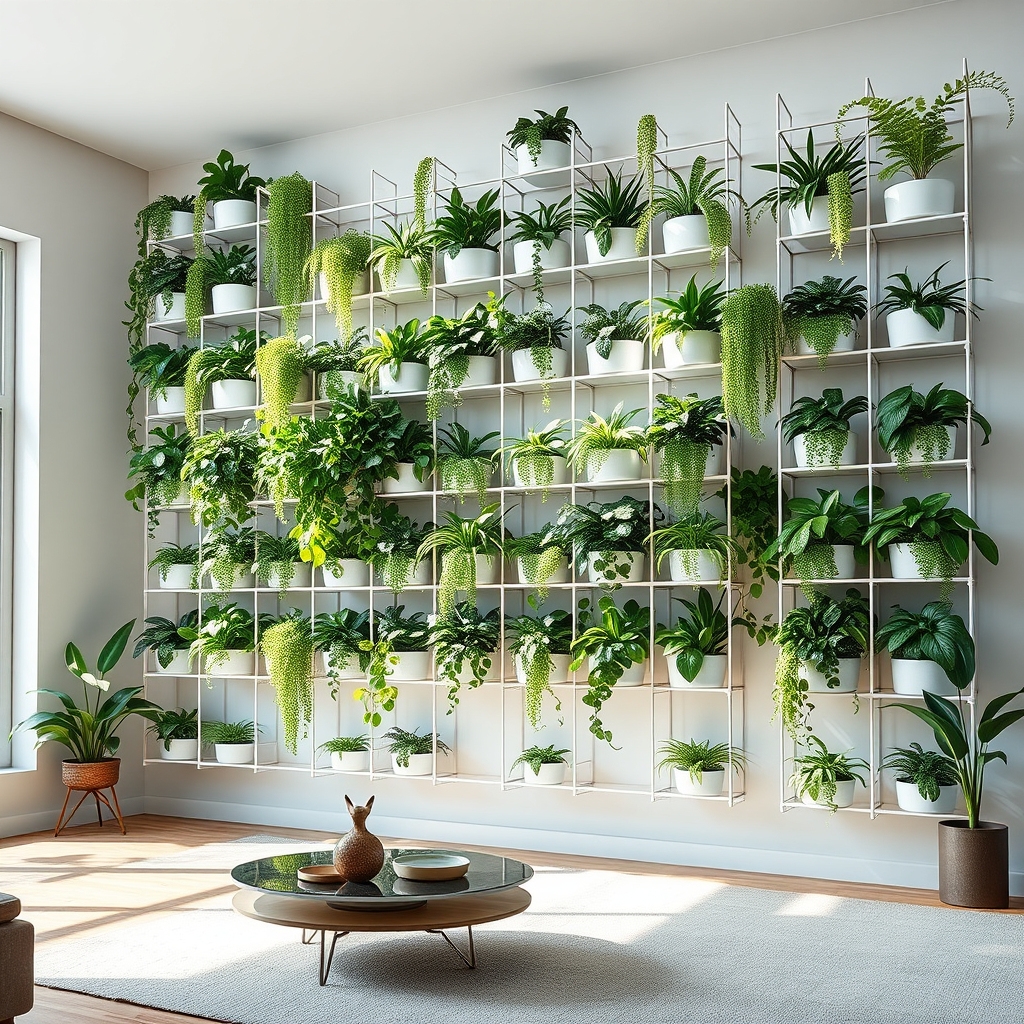
A living wall with vertical planters transforms ordinary wall space into a lush, three-dimensional garden display. The setup consists of multiple planters mounted directly onto the wall in a grid or artistic pattern, allowing plants to grow upward rather than taking up floor space.
The planters can be made from materials like recycled pallets, pocket organizers, or dedicated wall-mounting systems specifically designed for indoor plants.
This green feature creates a striking focal point while maximizing vertical space in smaller rooms. Plants cascade downward or grow upright, creating layers of varying textures and colors. Common plant choices include pothos, ferns, air plants, and succulents, which can be arranged to create dynamic patterns or flowing designs.
The living wall system typically includes built-in irrigation methods or easily accessible watering points to maintain plant health.
Unique features:
- Space-saving vertical design
- Creates instant visual impact
- Improves air quality
- Acts as natural sound insulation
- Can be customized to any wall size
- Allows for easy plant rotation and maintenance
Mix Plant Heights for Dynamic Visual Interest
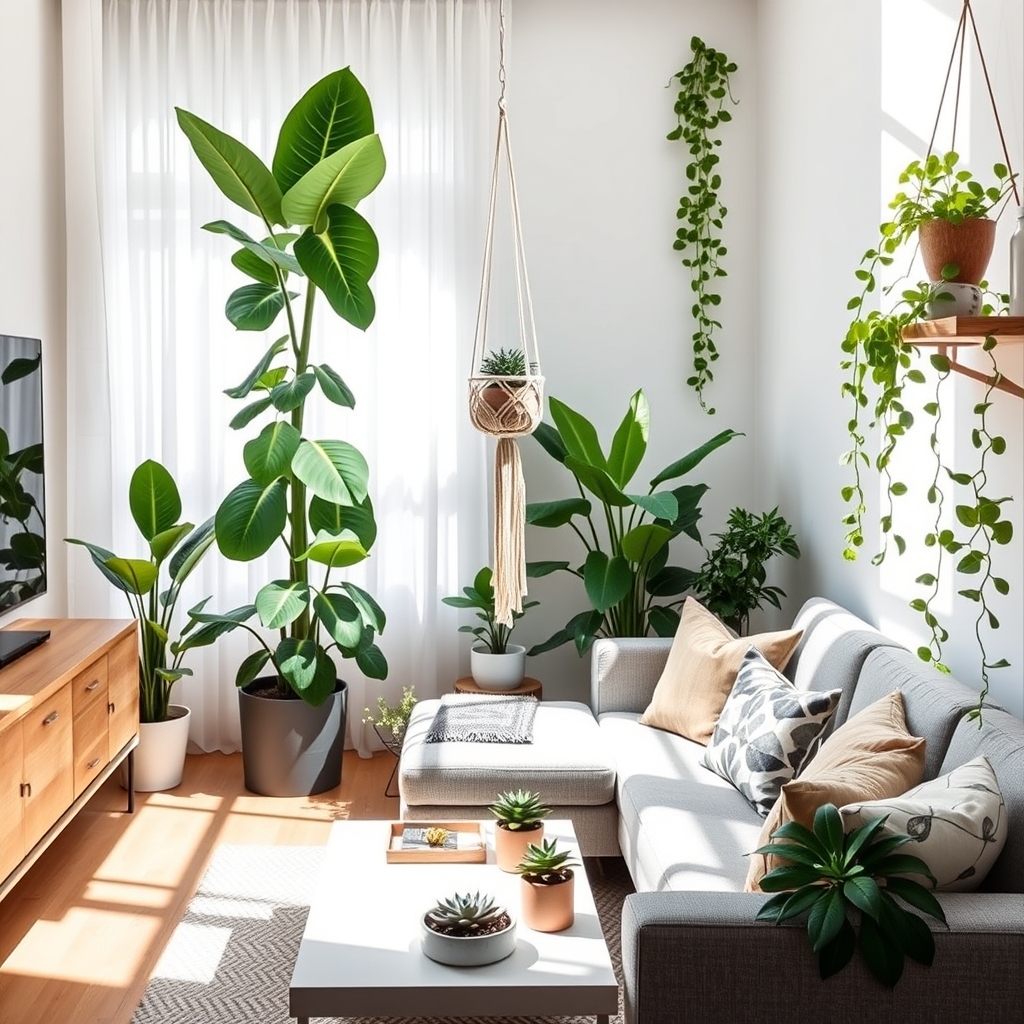
Mixing plant heights creates visual layers and depth in living room spaces by combining tall, medium, and low-growing plants.
Floor-standing specimens like fiddle leaf figs or bird of paradise provide dramatic vertical elements, while tabletop plants like pothos or snake plants occupy the middle ground.
Low-trailing plants such as ivy or string of pearls cascade from shelves or elevated surfaces, drawing the eye downward.
This intentional variation prevents monotony and establishes a natural, forest-like atmosphere where different species grow at varying levels.
The technique maximizes visual interest by utilizing vertical space and creates an organic flow that guides the viewer’s gaze throughout the room.
Style Built-In Shelves With Cascading Greenery
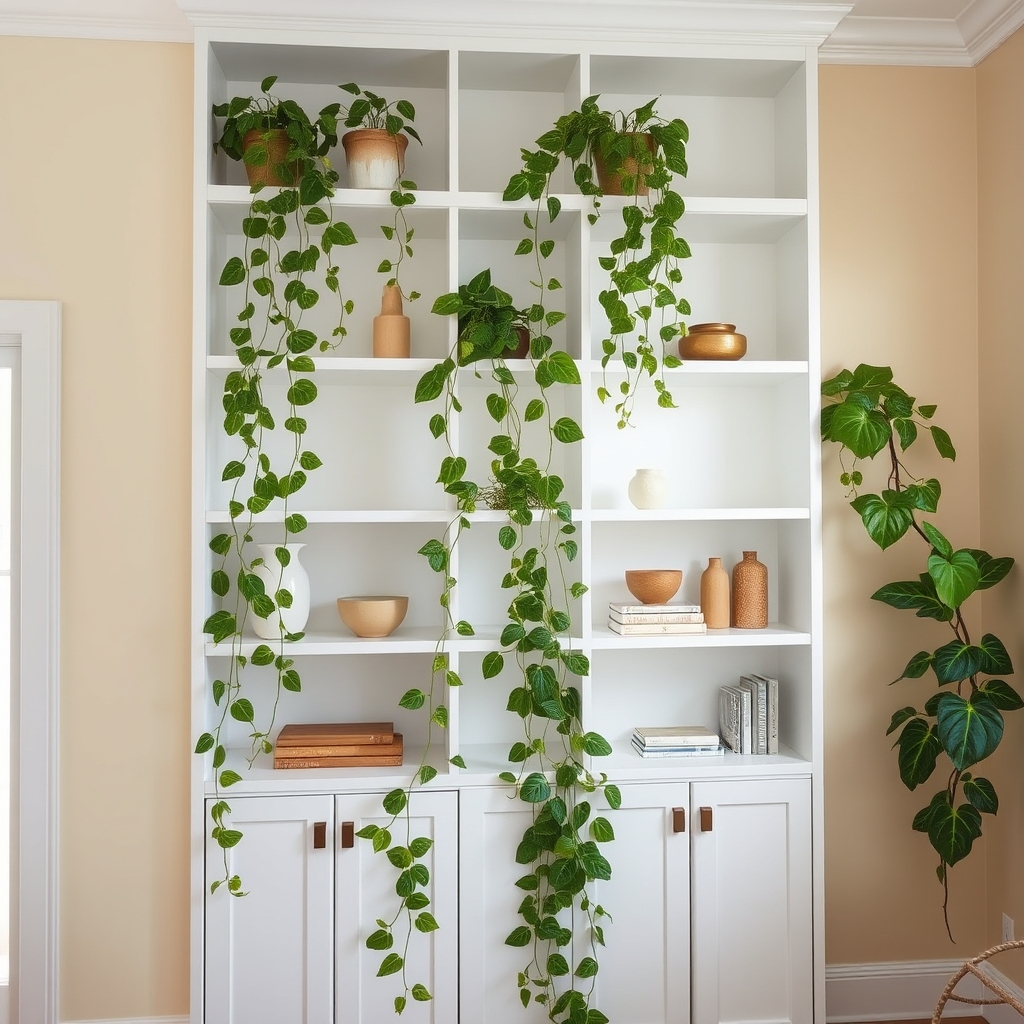
Cascading greenery on built-in shelves creates a dramatic, waterfall-like effect that softens rigid shelf lines while maximizing vertical space.
Trailing plants like pothos, ivy, or string of pearls are positioned on upper shelves, allowing their vines to elegantly drape downward between décor items. This layered arrangement adds natural movement and dimension to the room, transforming standard shelving into a living green display.
The cascading effect works particularly well with white or light-colored shelving units, creating striking visual contrast between the foliage and backdrop.
Transform Window Spaces Into Mini Conservatories
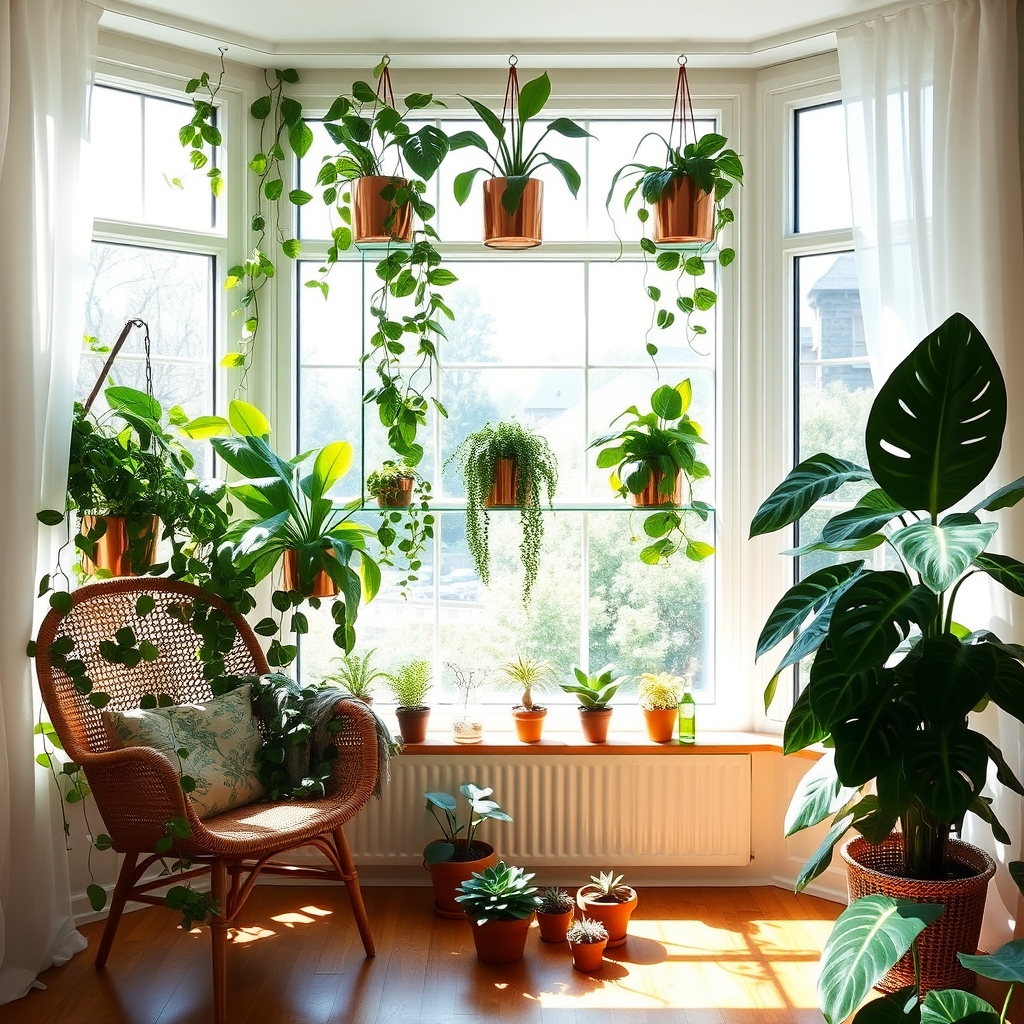
Transforming window spaces into mini conservatories involves arranging plants of varying heights and textures along windowsills and nearby surfaces to create a lush, greenhouse-like display.
Plants cascade down window frames while taller specimens reach upward, maximizing natural light exposure. Glass shelving installed across window frames adds vertical growing space, while hanging planters and trailing vines create depth.
The setup mimics Victorian-era conservatories but on a smaller scale, turning ordinary windows into focal points filled with botanical interest. Strategic placement of humidity-loving plants like ferns and tropical varieties helps create distinct plant zones while maintaining visual flow.
The overall effect blends indoor and outdoor spaces, making the window area feel like a deliberate extension of the garden.
Design Plant-Friendly Room Dividers
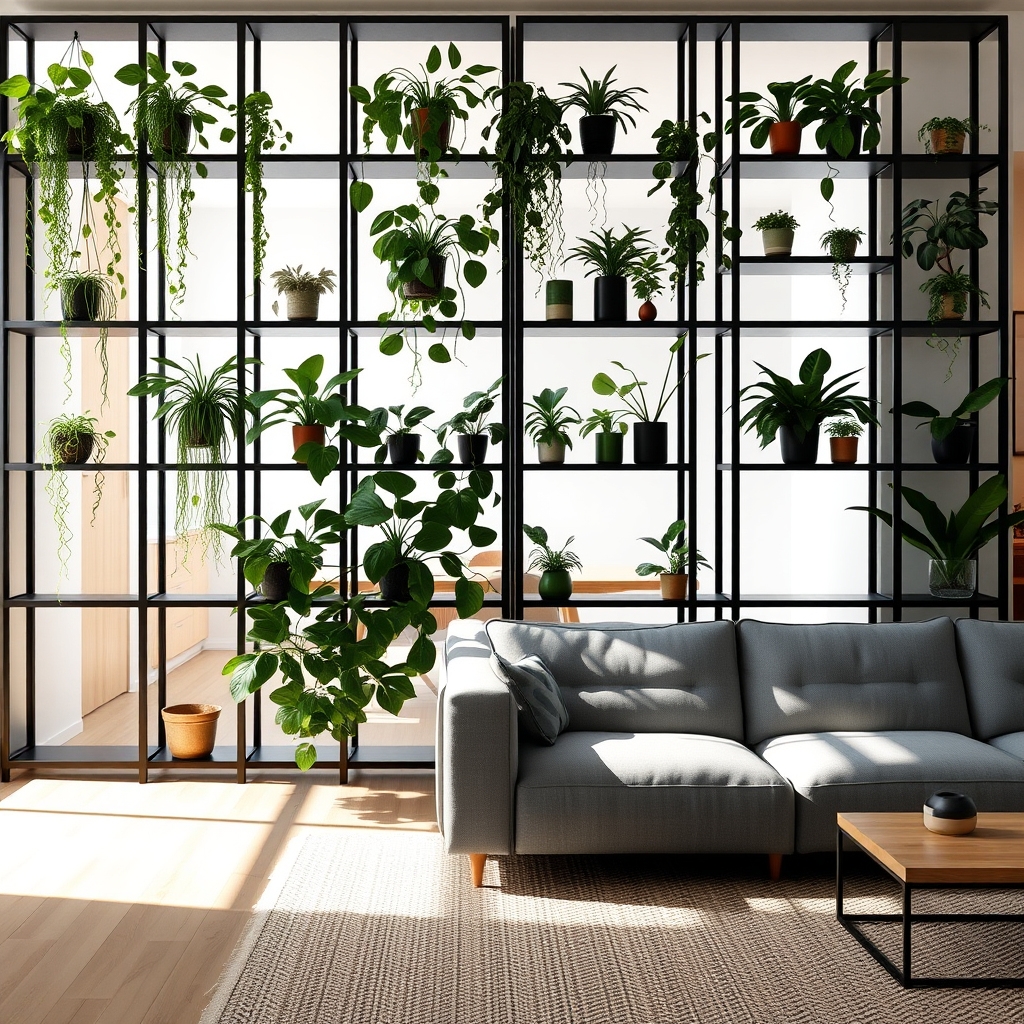
Plant-friendly room dividers combine functionality with natural beauty, creating semi-transparent boundaries using strategically placed plants and shelving units.
These dividers typically feature multiple tiers or grid-like structures that accommodate various pot sizes, allowing plants to grow at different heights and depths.
The unique feature lies in their versatility – they can be arranged as straight partitions, curved formations, or modular segments that can be reconfigured as needed.
Common designs include open-backed metal or wooden frames with built-in planters, macramé hanging dividers with potted plants, or floating shelves that display trailing vines and climbing species.
These living barriers effectively separate spaces while maintaining airflow and natural light, essential for plant health and room ambiance.
Incorporate Plants Into Coffee Table Arrangements
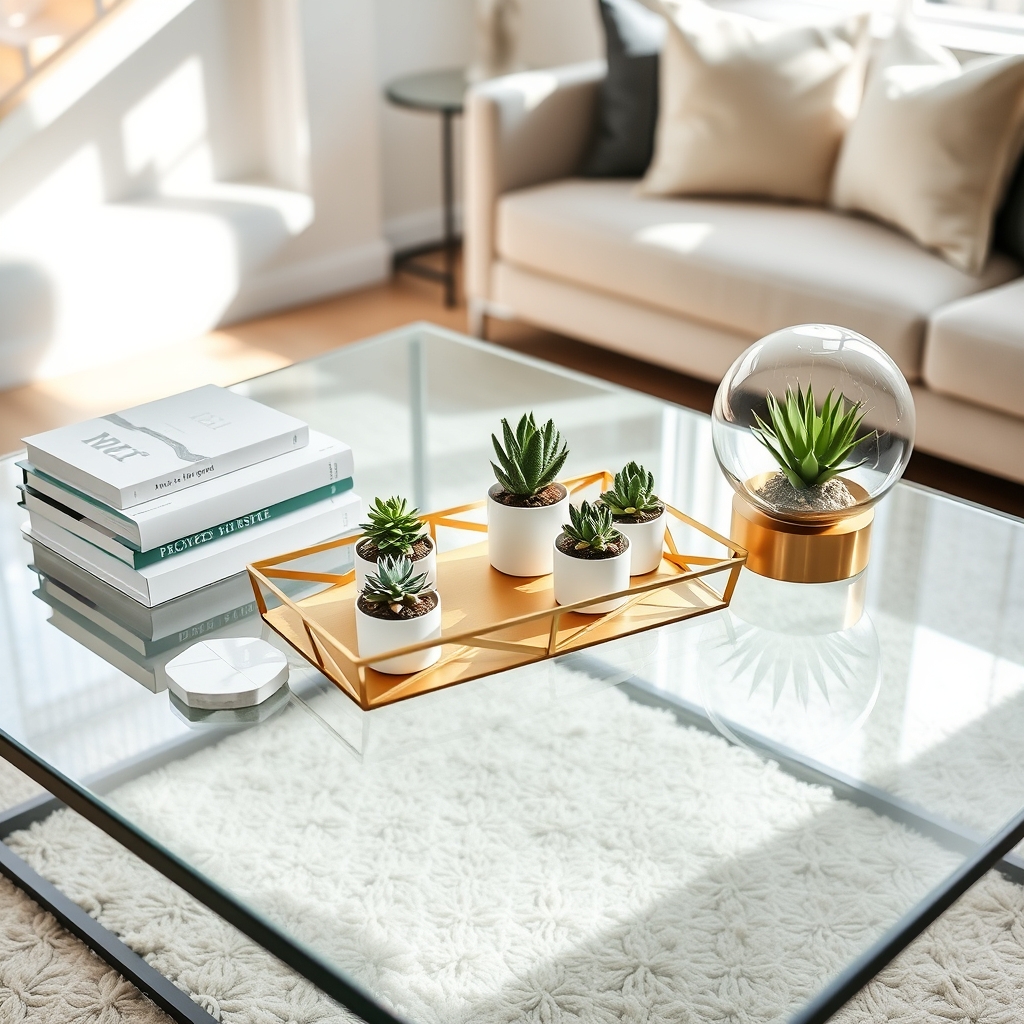
Incorporating plants into coffee table arrangements creates an elegant focal point by combining greenery with decorative objects in a curated display. Small potted succulents, air plants, or low-growing indoor plants are strategically placed among books, candles, and decorative trays to add natural elements and visual interest.
The arrangement typically follows the rule of thirds, with plants of varying heights and textures grouped alongside complementary items in an aesthetically pleasing composition.
The unique feature of coffee table plant arrangements is their versatility and ability to be easily rearranged. Plants can be rotated seasonally or relocated within the grouping to maintain visual freshness while ensuring proper light exposure.
Common styling approaches include clustering items on a large tray, creating multiple smaller vignettes, or using stacked books as elevated platforms for plant displays.
Utilize Macramé Hangers for Aerial Display
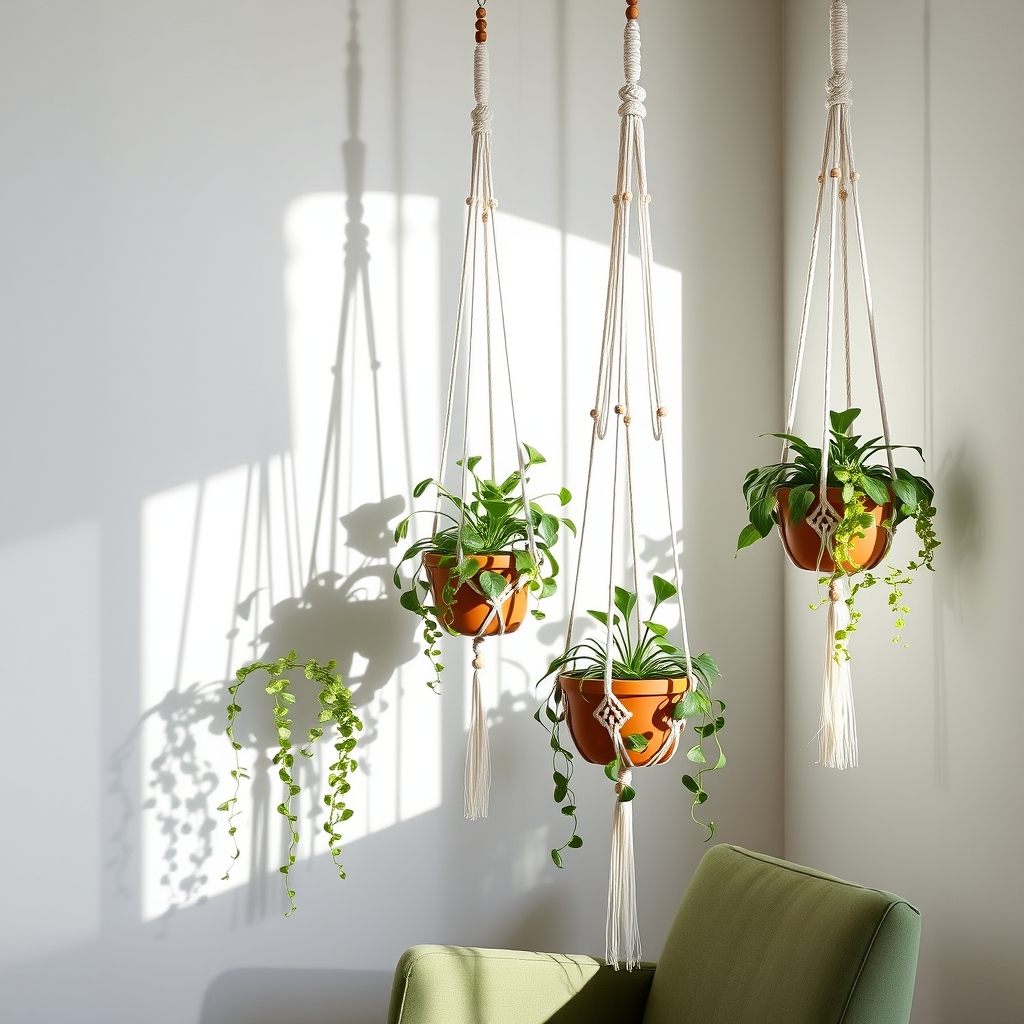
Macramé hangers transform indoor plants into striking suspended displays, featuring intricate knotted patterns made from natural cotton or jute cord.
These decorative holders cradle potted plants while creating visual interest at varying heights throughout the living space. The woven designs range from simple diamond patterns to elaborate geometric arrangements, often adorned with wooden beads or tassels for added detail.
The hangers allow trailing plants like pothos, spider plants, or string of pearls to cascade naturally while keeping floor space open. Each hanger can be adjusted to different lengths, creating a dynamic multi-level arrangement when multiple planters are grouped together.
The neutral tones of traditional macramé complement both modern and bohemian décor styles while adding texture to bare walls or empty corners.
Position Statement Plants in Unused Corners
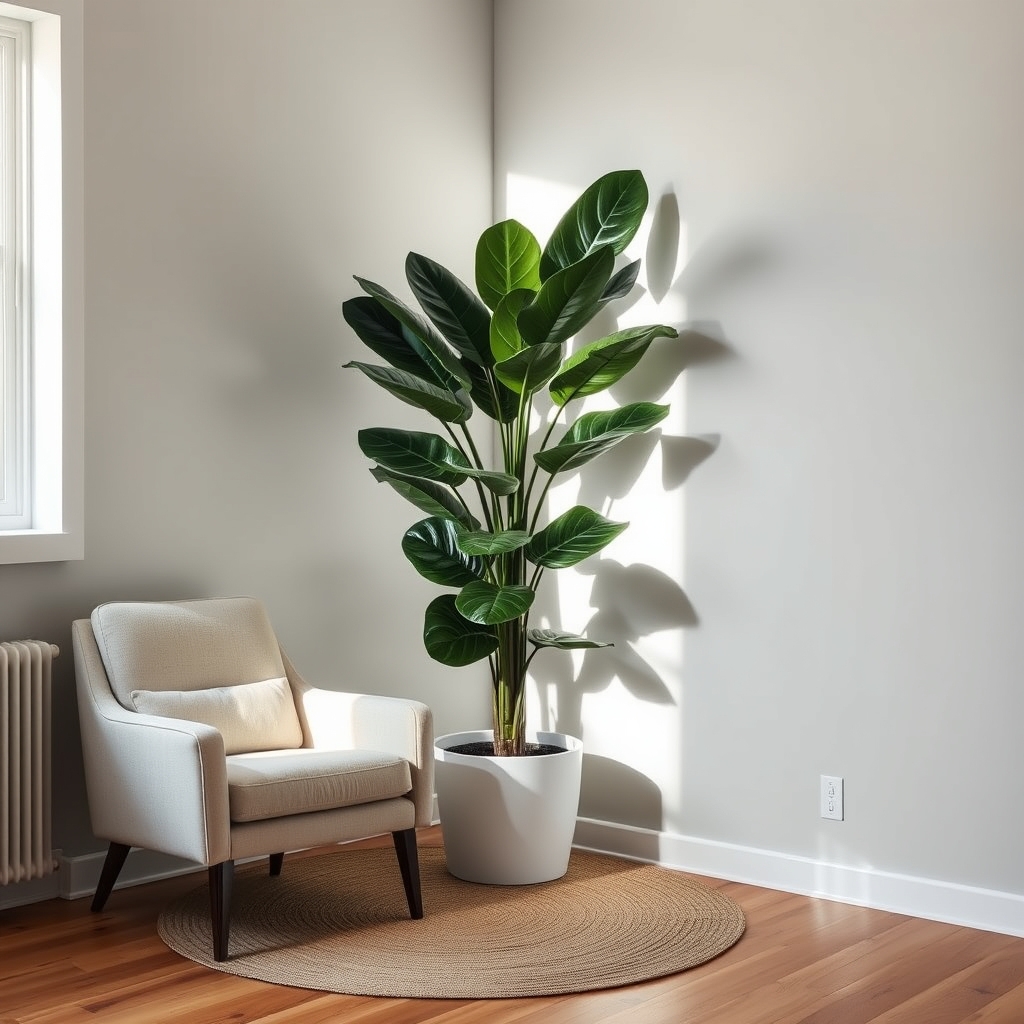
Placing statement plants in unused corners transforms neglected spaces into eye-catching focal points. Tall, architectural plants like Fiddle Leaf Figs, Bird of Paradise, or Snake Plants create visual interest and draw attention upward.
These corner plants typically stand 4-6 feet tall and feature dramatic foliage that makes a bold design statement. The plant’s natural form fills empty vertical space while softening harsh corner angles.
Strategic corner placement also maximizes floor space efficiency and creates depth in the room’s layout. Proper lighting from nearby windows or artificial sources ensures the plant thrives in its corner position.
Layer Plants With Lighting for Evening Ambiance
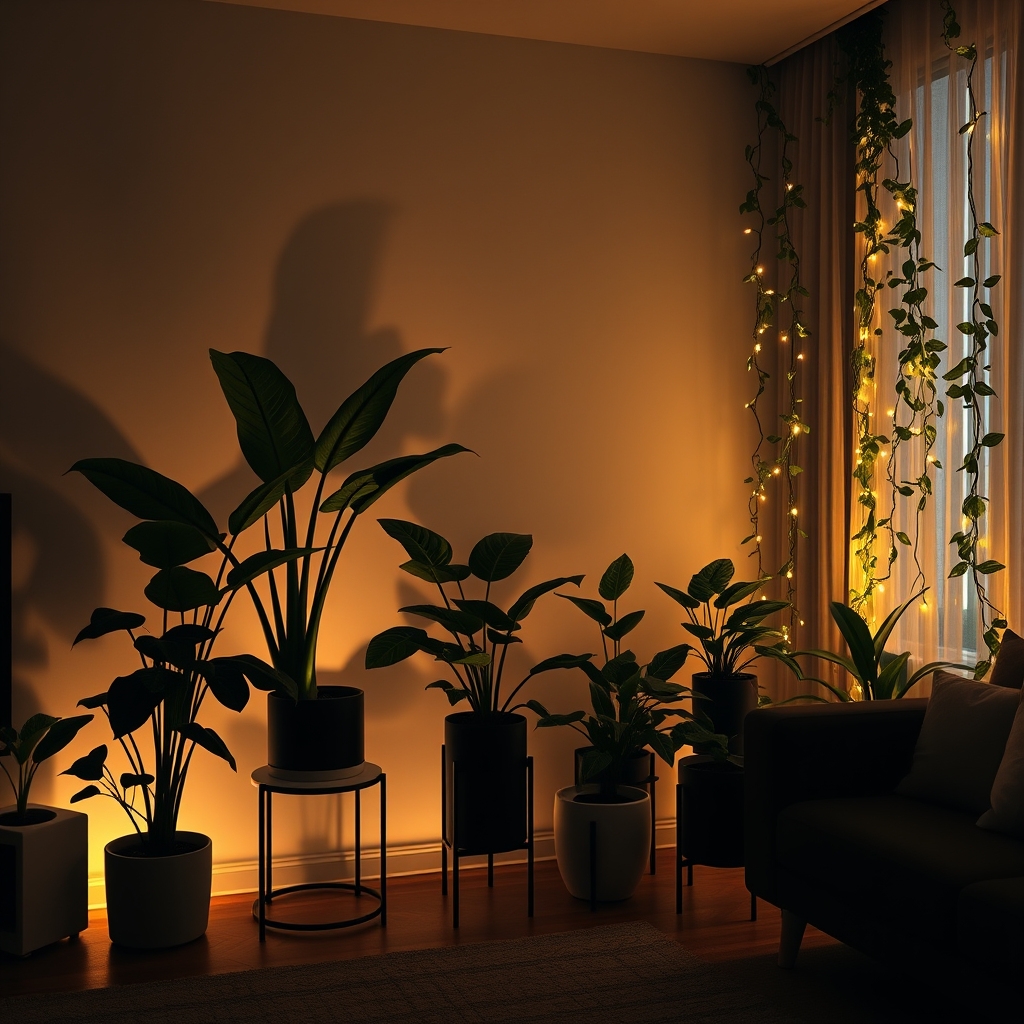
Layering plants with lighting creates a dramatic evening atmosphere by combining natural greenery with strategic illumination.
Small uplights placed behind floor plants cast leafy shadows on walls, while LED strip lights tucked beneath raised planters provide a floating effect.
String lights woven through trailing vines or wrapped around tall plant stands offer a soft, magical glow.
The interplay between foliage and light sources transforms ordinary houseplants into living art pieces after dark, adding depth and warmth to the room.
Key elements include using warm white lights to highlight plant silhouettes, positioning lights at different heights, and ensuring proper spacing between plants to maximize the lighting effects.
